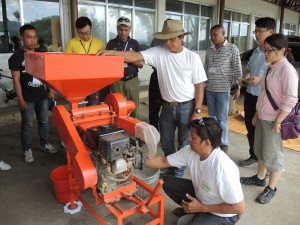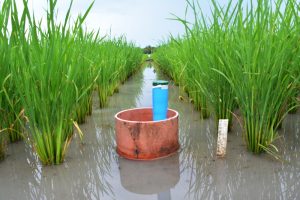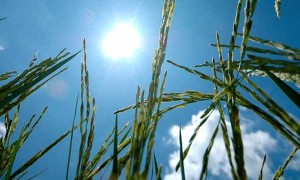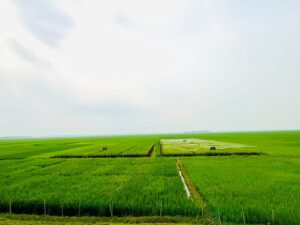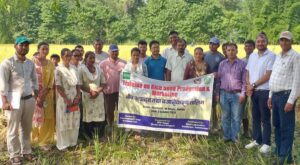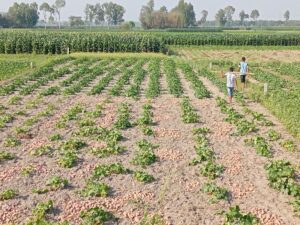Fiji’s Ministry of Agriculture, Waterways and Environment encouraged sugarcane farmers in areas affected by salt-water intrusion to shift to growing salt-tolerant for the next 4 months while their farms recover.
Farm areas in Vanua Levu inundated by storm surges generated by Typhoon Yasa need time for the saltwater to wash out.
The ministry suggested planting the salt-tolerant Deepak rice variety in the meantime.
Read the full story at Fiji Sun
More on salt-tolerant rice varieties:
Myanmar partners produce high-yielding salinity-tolerant rice varieties
Myanmar has a predominantly agricultural economy based on rice production, with 32% of the total rice area composed of unfavorable lowland areas. Salinity-affected rice-farming areas account for 2% of these unfavorable areas—almost 110,000 hectares—spread across different states and regions. Since 2011, the International Rice Research Institute (IRRI), through the Consortium for Unfavorable Rice Environments, has been working with Myanmar’s Department of Agricultural Research to develop suitable rice varieties for these challenging areas. Their fruitful collaboration has resulted in successfully developing and distributing to farmers seeds of three salinity-tolerant varieties—Sangnakhan Sin Thwe Latt, Pyi Myanmar Sein, and Shwe Asean.
Rice against the tide
According to IRRI’s online Rice Knowledge Bank, millions of hectares in the humid regions of South and Southeast Asia are suitable for rice production but are not cultivated or suffer from very low yields because of salinity and problem soils. Encroaching seawater in low-lying areas is making the soil too salty to grow crops. Reduced river flows and rainfall during the dry seasons can further increase saltwater intrusion, as seawater during high tides move farther upstream.
Bangladesh combats the “white plague”
No other country in South Asia is more vulnerable to sea-level rise than densely populated Bangladesh. With higher sea level, more areas would be affected by cyclonic surges; inland freshwater lakes, ponds, and aquifers could also be affected by saline-water and brackish-water intrusion according to the Intergovernmental Panel on Climate Change.Salinity affects around 1 million hectares in Bangladesh. Some climate experts say that sea-level rise will cause the country’s landscape to become “sicker.” For IRRI, making plants tolerate salt stress, up to an extent, is the way to go. The Institute has invested its resources for many years to develop varieties that can solve farmers’ problems in saline-prone areas.

